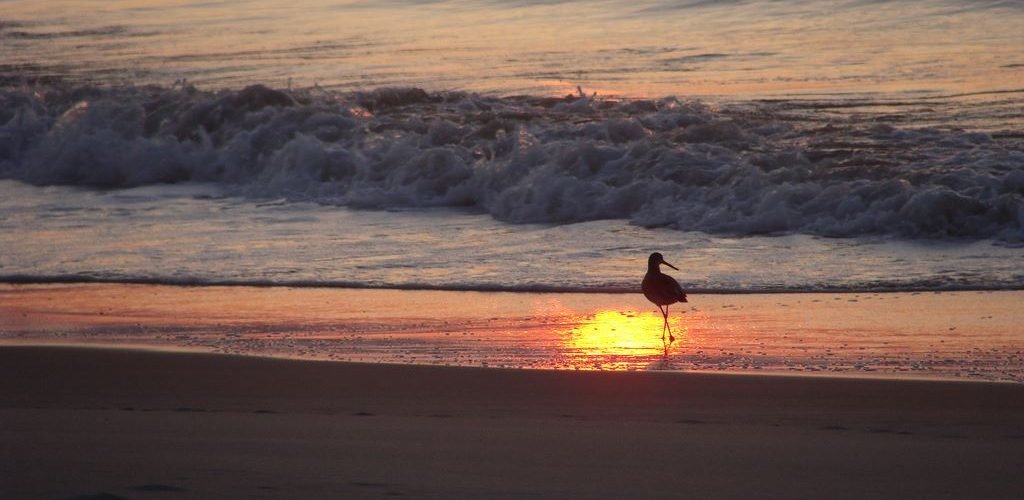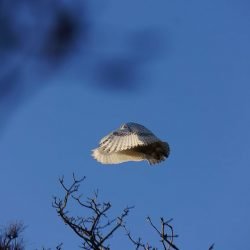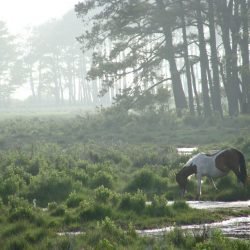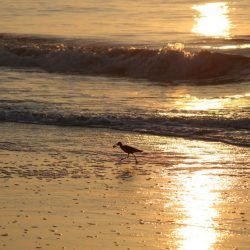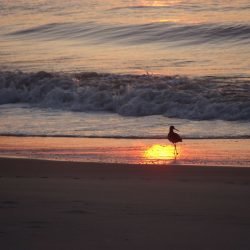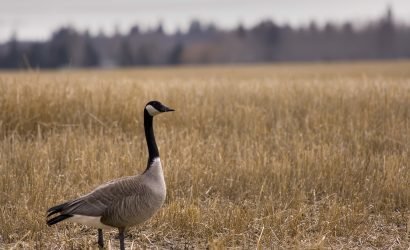The beaches in Ocean City and on Assateague Island in the winter are chilly and quiet in terms of human inhabitants, but wildlife in the area is abundant.
Birding is particularly popular in this area in the winter, evident by the Winter Delmarva Birding Weekend taking place on January 27 – 29. Even outside of the event weekend, Assateague Island is usually occupied primarily by birders in the winter months. According to their website, during the 2016 Winter Delmarva Birding Weekend 111 species were tallied, including Harlequin Duck, Great Cormorant and Purple Sandpipers.
Snowy owls also make winter appearances in the area. Even though snow is rare on the Eastern Shore, they seem to love hunting in the sand dunes of Assateague Island. While the snowy owls don’t visit us every year, they have been spotted in 2017.
While you’re on Assateague Island, you can also see their year round residents, the wild ponies. From the Berlin entrance, the ponies are especially easy to find, sometimes wandering the parking lots, beaches, marshes and roads. From the Chincoteague entrance, pony sightings can be a bit more difficult, but the pony lookout on the Woodland trail is a good bet. On the trail, take the branch on the right. The lookout is not far down that trail. Because the trail is protected by trees, we’ve found it to be a good option on cold windy days.
In the winter months, seals also make stopovers in the Ocean City areas to rest. At times they can be spotted on the beach, or on the small islands in the Assawoman Bay. Seals that are beached need their rest, and it is unlawful to get within 50 yards of the seal. Maryland Coastal Bays and the National Aquarium ask that seal sightings be reported via their website or by calling 1-800-628-9944. They can also help if you think the seal is in distress.
During the winter months whales are also migrating through our waters. Only on rare occasions can these whales be seen from shore, but a lucky few have experienced it. Some surrounding areas offer whale watching boat tours during the winter months, but those in Ocean City usually spot whales while out on fishing excursions.
One of our favorite unexpected beach dwellers is the red fox. Living in the sand dunes, these foxes often sneak out at the edges of daylight and during the night. Many fear that seeing a fox on the beach may be a sign of rabies, but the sand dunes are a natural place to find these adorable prowlers.
Remember to enjoy wildlife sightings at a safe distance, and to never feed wildlife. Feeding wildlife not only leads to animal dependence on humans, but can also have serious repercussions for the animals health. For example, feeding waterfowl an unnatural diet causes a condition called angel wing, which can make flying impossible, leaving the animal less likely to escape danger (like cars) and unable to migrate, often leading to freezing or inability to find food sources. Enjoy our wildlife and help keep them safe and healthy!






